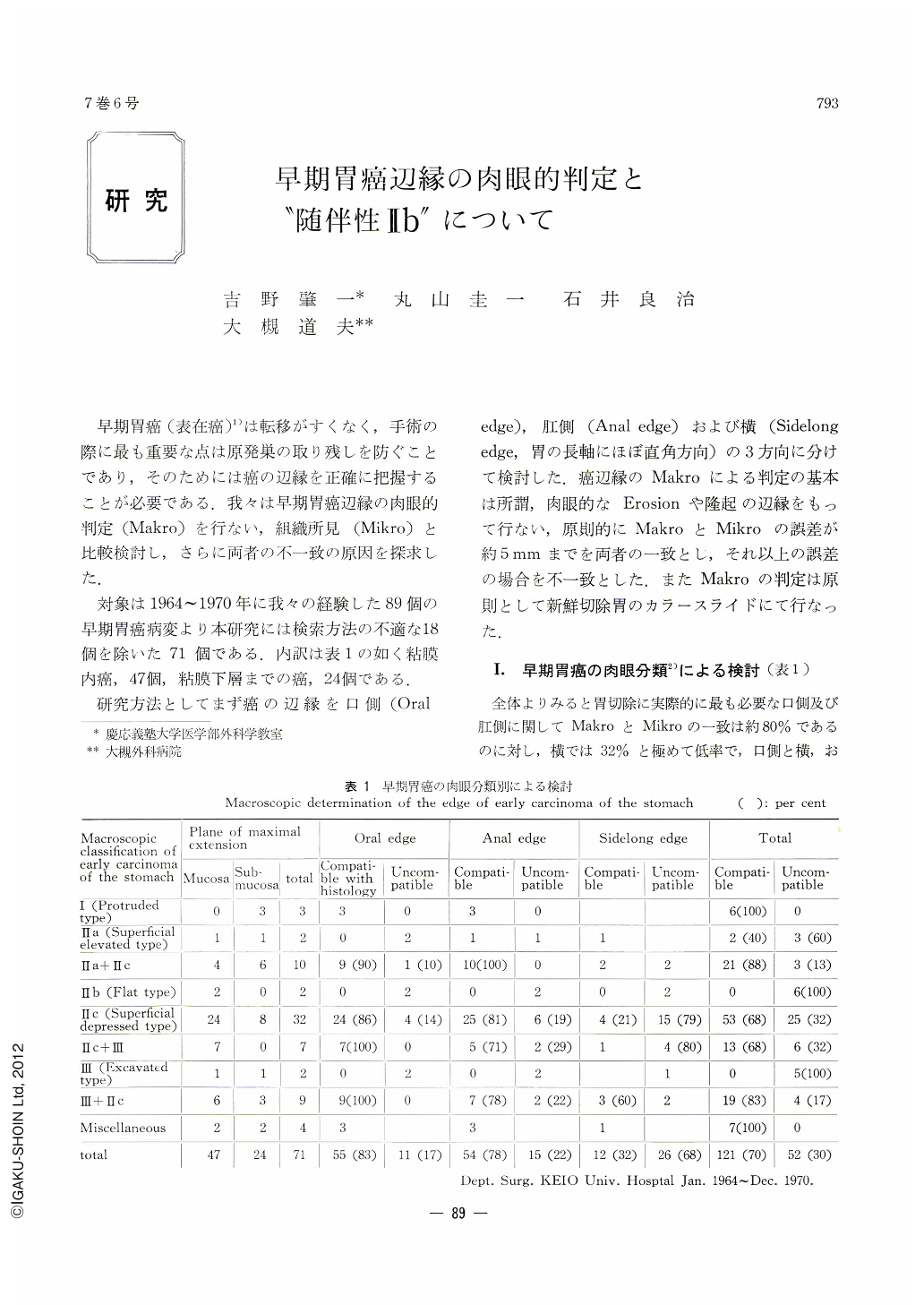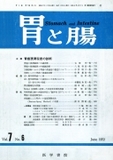Japanese
English
- 有料閲覧
- Abstract 文献概要
- 1ページ目 Look Inside
- サイト内被引用 Cited by
早期胃癌(表在癌)は転移がすくなく,手術の際に最も重要な点は原発巣の取り残しを防ぐことであり,そのためには癌の辺縁を正確に把握することが必要である.我々は早期胃癌辺縁の肉眼的判定(Makro)を行ない,組織所見(Mikro)と比較検討し,さらに両者の不一致の原因を探求した.
対象は1964~1970年に我々の経験した89個の早期胃癌病変より本研究には検索方法の不適な18個を除いた71個である.内訳は表1の如く粘膜内癌,47個,粘膜下層までの癌,24個である.
The early gastric carcinoma was defined as carcinoma of the stomach of which invasion was limited to the mucosa and submucosa. In the treatment of this carcinoma, it is most important to determine the cancerous edge accurately at the gastrectomy to prevent the imcomplete resection.
Seventy-one lesions of operated early gastric carcinoma are evaluated as for their edge macroscopically and histologically in three direction in each case, i.e. oral, anal, and sidelong direction.
The macroscopic determination of the oral and anal edges is comparatively well compatible with the histological study, 83 and 78 per cent respectively. As for the lateral edge, however, it is most incorrect, namely 32 per cent.
There is not infrequently found the intramucosal extension of the carcinoma beyond the macroscopic cancerous edge, which is termed “Flat Extension”. The “Flat Extension” is most frequently found in sidelong direction, and is classified histlogically as follows:
A. Fundamental Type
A-1. Upper Layer Type
A-2. Middle Layer Type
A-3. Lower Layer Type
A-4. Whole Layer Type
A-5. Mixed Type
B. Specific Type
B-1. Depressed Portion Type
B-2. Protruded Portion Type
The maximum “Flat Extension” is 1.4 cm in the oral direction and 2.6 cm in the anal. The mucosal and/or submucosal cancerous extension beyound the pyloric ring is limited within five millimeter in our experience of early carcinoma.
The gastrectomy for the early gastric carcinoma should be done carefully to prevent the remnant of this “Flat Extension”.

Copyright © 1972, Igaku-Shoin Ltd. All rights reserved.


